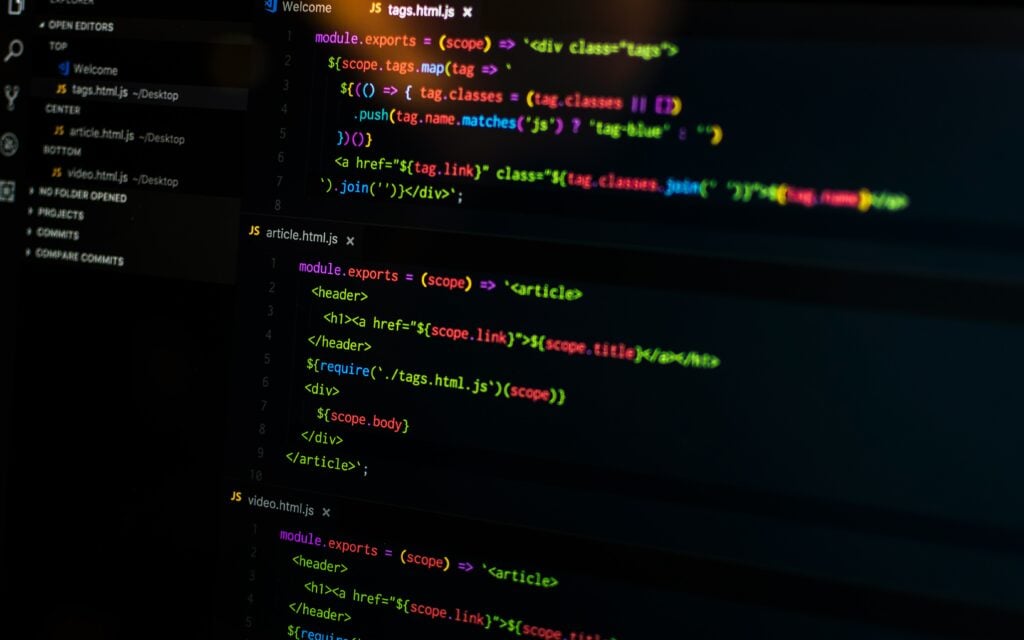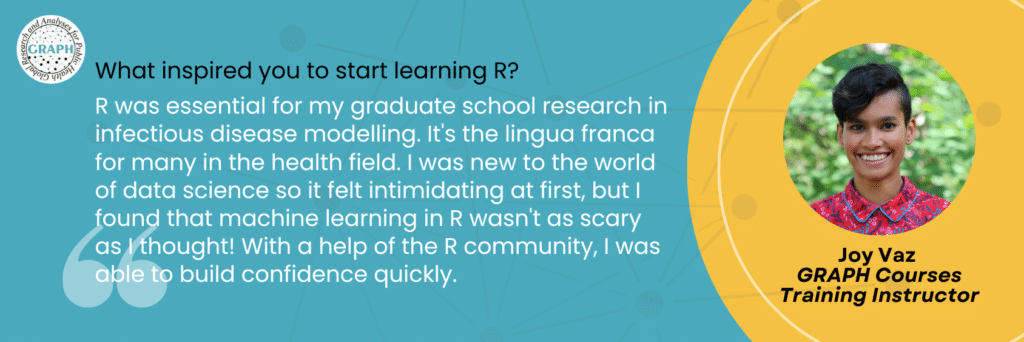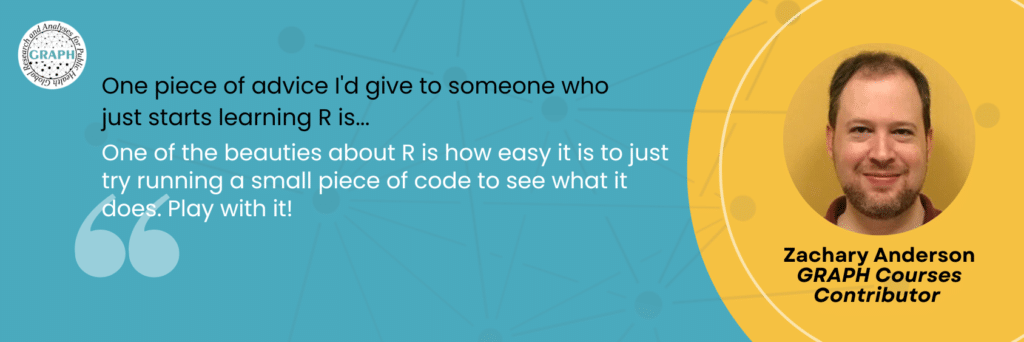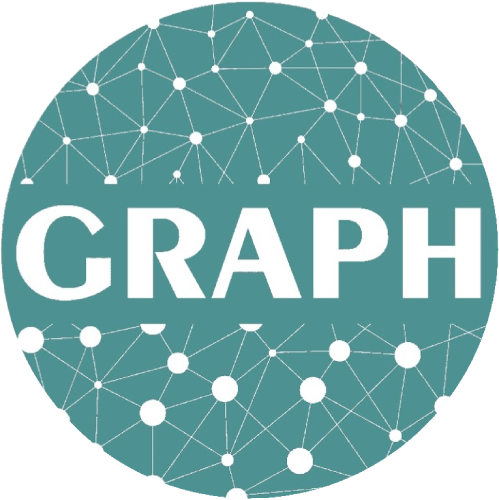Five reasons why you should start learning R today

Are you new to the data science world or would like to break into it? Here’s why learning R might be the best choice for you.
In today’s data-driven world, a career related to technology seems to be a solid choice, and many decide to make that leap without any previous experience in computer science. No wonder: with so many great self-study resources available, it usually takes no time before you gain enough proficiency to land the next contract. The point where people seem to stall is the final choice: what specialty to follow? Which programming language will be the best for me?
Don’t fret, we’ve got you.
At the GRAPH Network, we enable our students to gain proficiency with R because R Programming continuously ranks among the best environments dedicated to statistical data analysis. Learning it is considered a crucial step in breaking into scientific data analysis. Though other languages like Python are also very popular, R is steadily gaining traction, especially among academics.
Here are our five main reasons why you should start learning R today.
1. R prevails in data science
R has been developed as an open-source software and it comes with many benefits such an environment provides. Its use is free of charge which benefits individuals and not-for-profit organizations who want to use it for educational or statutory purposes. Such software is also flexible, which means that the source code can be modified to serve the specific needs of the users. The R library is constantly growing thanks to individual contributors who share their ideas for solving data-related issues. In addition open-source programming software is often more secure than proprietary software as all the vulnerabilities are identified and patched quickly by the core developer team as well as a community of individual creators. The collective hive-mind of the developers’ community promotes innovation and progress within the software. Last but not least, open-source software gathers a large community of users and creators, where it’s easy to find help and encouragement from more experienced users.

2. R is open-source and free
These days data scientists are spoilt for choice when it comes to programming languages. And while having a wide variety of options is, on one hand, a great thing as everyone can find something suitable for themselves, on the other, it makes it that much harder for beginners to pinpoint a comfortable spot to kick off their data science education. Is there a simple way to choose the best language to start with? Learning a programming language is a time-consuming endeavor and surely, we don’t want to end with the knowledge we won’t be able to use and have to start all over again. Experts say that your choice of language should depend on the sector you wish to work for. At the GRAPH Network, we agree that the future of the job market lies primarily at the crossroads between technology and health services. Epidemiology, public health, humanitarian, and crisis response, as well as disease surveillance all need skilled scientific statisticians who will know how to wrangle, visualize and interpret data into readable dashboards and fact sheets. Informed decision-making processes on a global, as well as local scale, rely heavily on up-to-date data analysis. And that kind of data analysis is done with R.
3. The R community
It’s probably the best community of developers, learners, and enthusiasts in the whole world wide web (objective opinion). R bloggers, probably the biggest hub out there bringing hundreds of R writers together, is a great place to poke about when you start learning R. Or when you think you know everything about it – someone will probably prove there are more packages in R that are dreamt on in your software toolkit. The community makes it worth it and helps to keep you accountable. Sharing your “reasons why” with a few fellow raw R recruits (RRR for short) is likely to help you keep up your spirit when the times get rough. Having access to like-minded people who have gone through the same learning curve makes it easy to search for a mentor or create a study group. At the GRAPH Network, we have a great community of R students – pop by to say hi!

4. R has powerful visualization capabilities
R is one of the very few data analysis tools which allow you to create spectacular visualizations right from the start. In our course, the ggplot2 package responsible for creating stunning plots’ visuals is introduced already in module 2. Two hours into the study! And there are of course many more. Ggplot2 can help to visualize data in many different ways such as creating histograms, bar graphs, box plots, and more. The type of visual chosen depends on the form of information that needs to be displayed. Tabs, pie charts, bar graphs, or plots help to illustrate the data that can be used for decision making.
5. R package system
R has an impressively extensive package system – at the moment there are more than 10,000 registered packages in the CRAN library and this number is growing. If there’s a problem to solve, it will most likely be solved soon. Thank you, hive mind!

The future of data (science)
All large market analysts agree that the number of data analysts is likely to grow over the next few years as their services remain in high demand. Telecom, insurance, or advertising, not to speak of health sciences and development, account for a huge adoption of big data analysis. On a smaller scale, public health policy and governance are firmly based on accurate data analysis for disease surveillance. The COVID-19 pandemic proved that adaptation of a state-of-the-art systemic approach to data processing tools enabled the policymakers to quickly draw actionable conclusions.
The proof is in the pudding: data science saves lives.
Interested in starting a course in data science programming? Great, we’ve got you! With our 3-step FREE course in Data Science in Epidemiology you’ll be able to get a firm foundation in R programming through great, step-by-step instructions, interesting challenges, and working with real-life data sets.
Head over to our YouTube channel or website to get more information. Or you can just simply ENROLL to get the benefits of a great R-learning community and find out first about our new courses (including our upcoming premium guided course) and offers.




Forever grateful for this wonderful team and the opportunity. I have just discovered R programming through the GRAPH courses and guess what, just bagged an opportunity because of R. So, I am piping you to this GRAPH courses, do your own wrangling and enjoy the visualization. Right, Kene?
A fantastic summary! Thanks Marta!